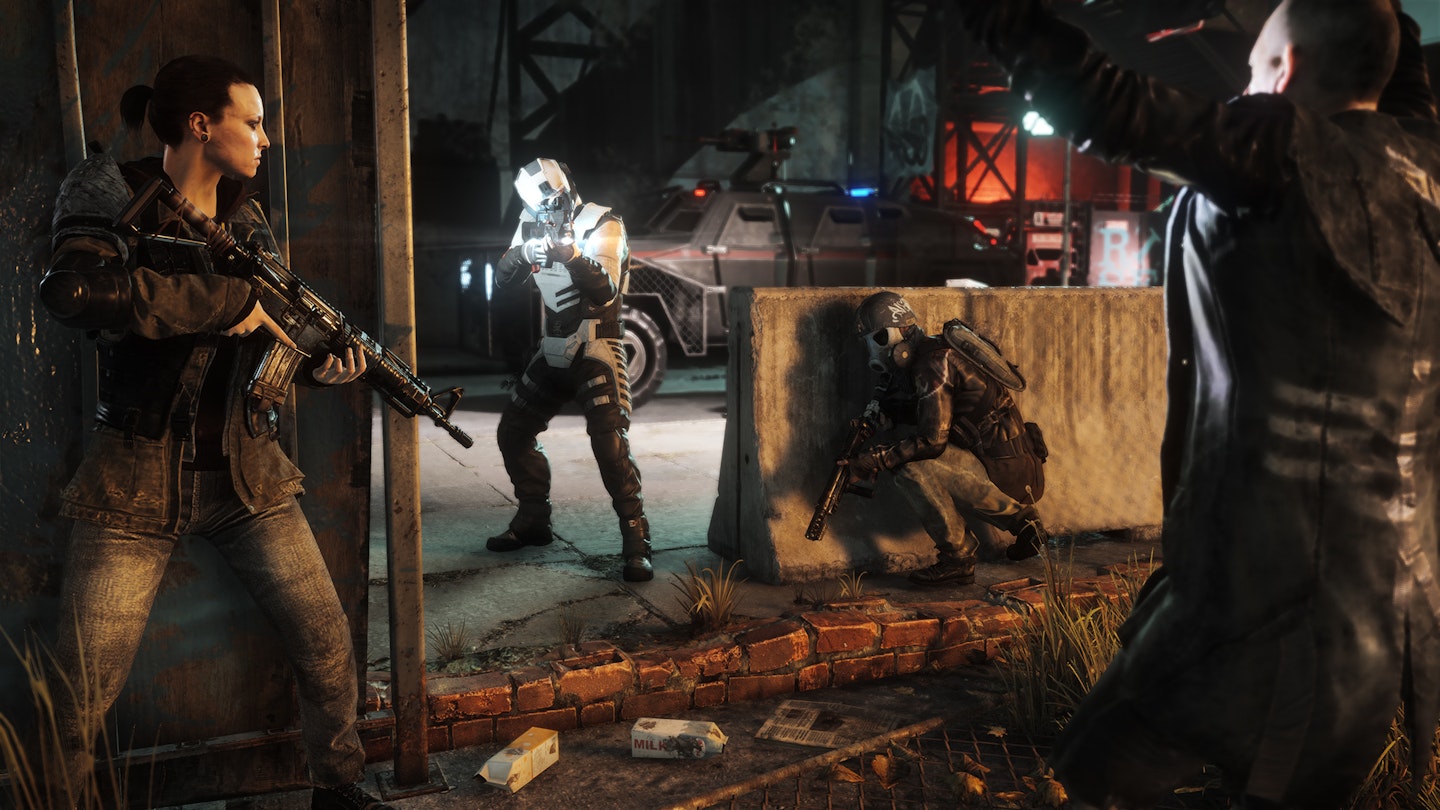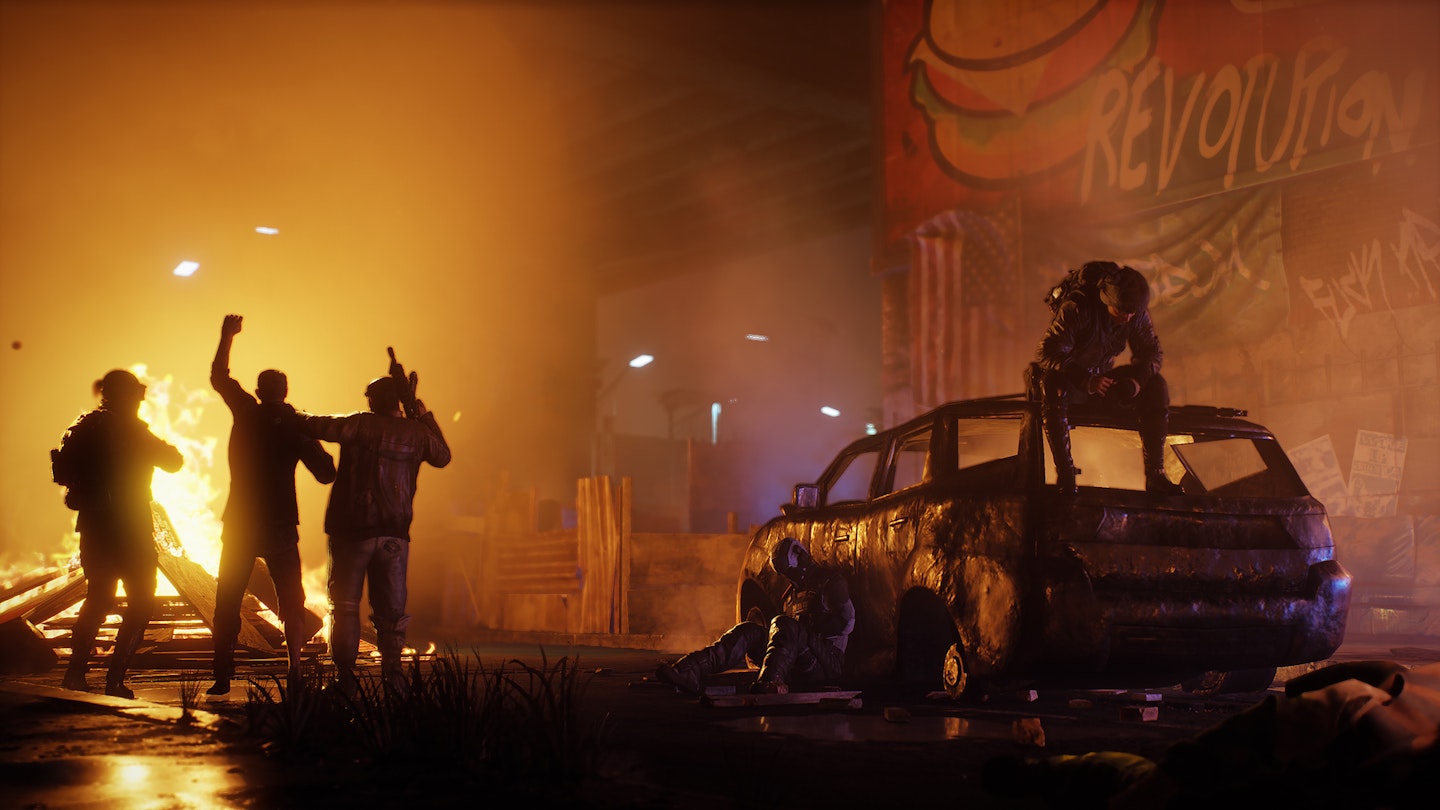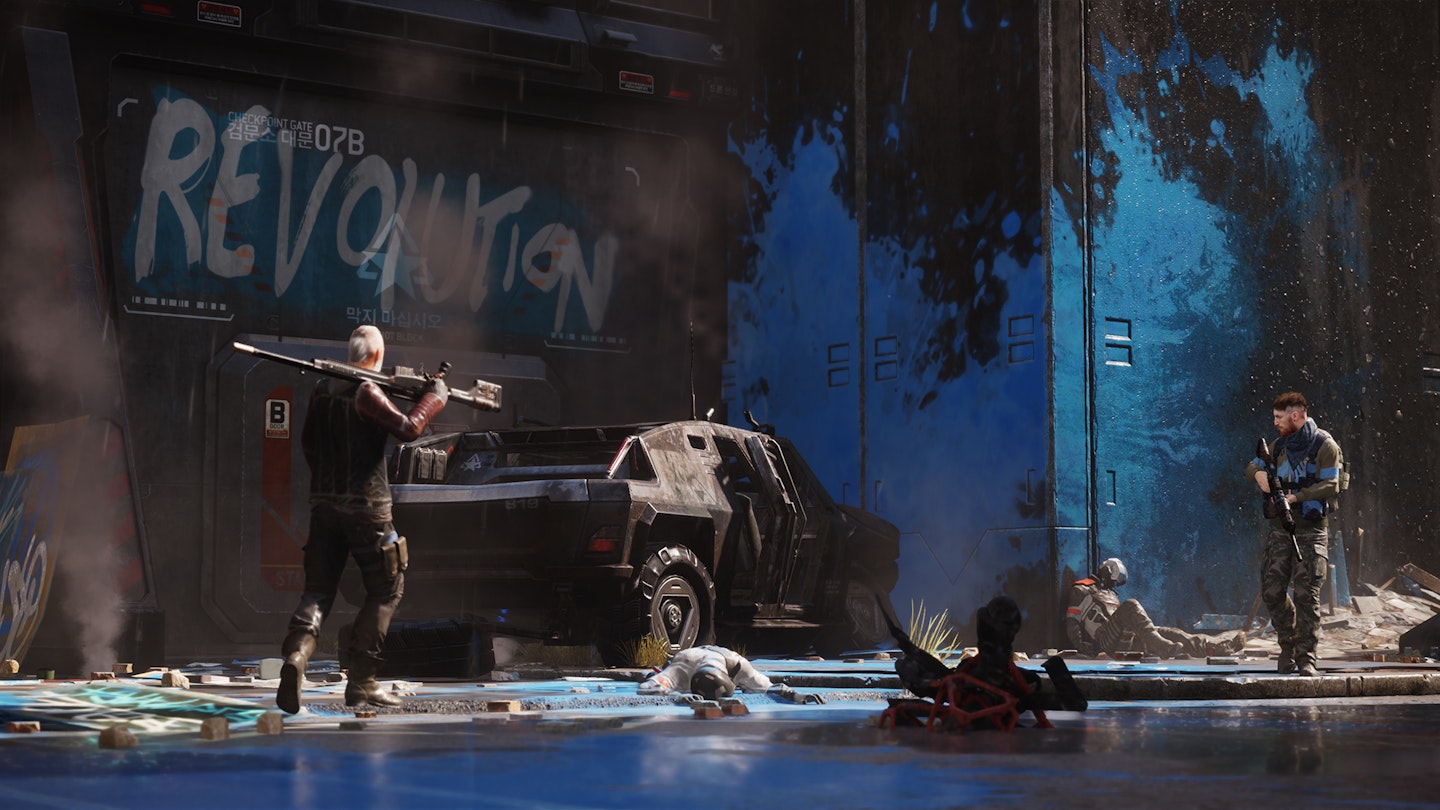Homefront: The Revolution is a properly open-world first-person shooter, set in an intriguing sandbox made possible by a wildly improbable premise that only the most out-there of conspiracy theorists will fully embrace. Set in 2029, capitalism has collapsed like a house of cards, plunging America into chaos; meanwhile North Korea has become the world’s economic powerhouse, and the venality of American politicians means that North Korean troops – the Korean People’s Army or KPA – ruthlessly patrol the streets of American cities. The game casts you as an American freedom-fighter on the streets of Philadelphia.
It’s the sort of premise to which only a game (and to a lesser extent Red Dawn) could do justice, but truly open-world first-person shooters are among the most difficult games to make and, sadly, that is more obvious than it should be in Homefront: The Revolution. A slow frame-rate lends proceedings an unwelcome level of jerkiness and egregious glitches are a familiar occurrence.

Technical difficulties aside, however, there’s much to admire. Despite the improbability of the storyline (and a tendency by your fellow resistance-fighters to speak in wince-inducing clichés), the dire situation feels utterly believable. The KPA has carved up the city into three zones – the Red ones being wastelands into which the KPA rarely ventures and the resistance flourishes; the Yellow zones being where the remaining population now lives, constantly harassed by KPA troops; and the Red zones being where the KPA has set up bases and kicked out the locals.
The gameplay morphs accordingly: in the Yellow zones, you must employ a degree of stealth, while in the Red zones you enter mob-handed and must pull off closely co-ordinated missions in what feels most like a conventional first-person shooter.
The sense that you are part of a resistance movement taking on a vastly better-equipped foe is thrillingly palpable, and enhanced by a superb crafting system which lets you turn junk into things like remote-controlled teddy-bears you can detonate when curious soldiers inspect them, and throwable bombs that can take out armoured cars. Throw in a vast number of side-missions and, particularly in the Yellow zones, innumerable random chances to intervene against KPA brutality – thereby recruiting more boots for the cause – and the end result is meaty enough to prove a dream for inveterate tinkerers.

The co-operative multiplayer is decent but, like the single-player game, far from glitch-free. It consists of six very long and difficult missions which require you to form a fire-team along the lines of those in Rainbow Six Siege, where everyone needs to fill a specialised role. While you can recruit random resistance-fighters to help you in single-player missions, it’s only in the multiplayer that you get a real sense of being in a team and fighting for survival.
Homefront: The Revolution is the archetypal curate’s egg – in many ways, particularly its refusal to content itself with being yet another generic first-person shooter, it’s exemplary. But its ambition has got the better of it, resulting in a technical shoddiness that sullies the whole experience. It won't come into its own until Dambuster Studios fixes the glitches, but even now, if you’re a first-person shooter fan looking for something different, and aren’t expecting the level of polish that you find in the likes of Doom, it’s still worthy of consideration.
